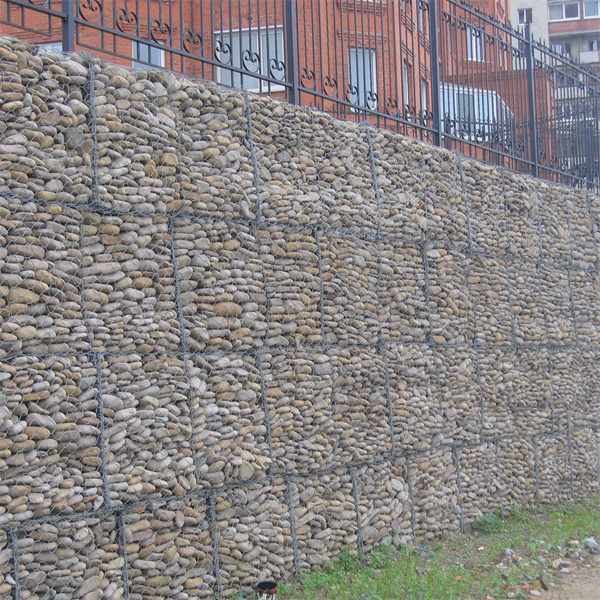dets. . 26, 2024 07:08 Back to list
Design and Benefits of Gabion Wall Mesh for Landscape and Erosion Control
The Versatility and Benefits of Gabion Wall Mesh
Gabion wall mesh has emerged as a popular choice in the realms of civil engineering, landscaping, and environmental conservation. This innovative solution is formed from wire mesh cages filled with rocks, concrete, or other materials, resulting in a structure that is both functional and aesthetically pleasing. The versatility of gabion walls makes them suitable for a variety of applications, from erosion control to decorative landscaping features.
Understanding Gabion Walls
Gabion walls consist of stacked stones enclosed in wire mesh, typically made from galvanized steel or PVC-coated steel. These cages come in various sizes, allowing flexibility in design and application. When filled with materials, they create a robust barrier capable of resisting the forces of nature, such as wind, water, and soil pressure. Gabions have a long history, originally used in military applications for fortification and later adapted for civil engineering.
Advantages of Gabion Wall Mesh
1. Erosion Control One of the primary uses of gabion walls is for erosion prevention along riverbanks, coastlines, and hillsides. The porous nature of the mesh allows water to flow through while trapping sediment, effectively stabilizing the soil and reducing the likelihood of landslides.
2. Cost-Effectiveness Gabion wall mesh is often more affordable than traditional retaining wall solutions. The materials used can vary from locally sourced stones to recycled concrete, minimizing transportation costs and reducing environmental impact.
3. Environmental Benefits Unlike concrete walls, gabion walls integrate seamlessly into the environment. The natural materials allow vegetation to grow, promoting biodiversity and creating habitats for various species. Additionally, their open structure facilitates water drainage, reducing the risk of flooding in surrounding areas.
gabion wall mesh

4. Aesthetic Appeal With their natural stone appearance, gabion walls can enhance the visual appeal of any landscape. They can be designed to fit into rustic or modern settings, depending on the choice of fillers. This flexibility makes gabion walls suitable for decorative purposes in parks, gardens, and public spaces.
5. Easy Installation and Maintenance Constructing a gabion wall is a relatively straightforward process, typically requiring less manpower and equipment than traditional retaining walls. Once built, gabion walls are low-maintenance, often only requiring periodic inspection to ensure the integrity of the mesh and stones.
6. Durability and Longevity Gabion walls are designed to withstand environmental pressure and can last for decades with minimal degradation. The galvanized coating on the wire mesh protects it from rust and corrosion, especially in wet or harsh environments.
Applications of Gabion Wall Mesh
Gabion walls can be utilized in numerous applications, including
- Retaining Walls Used for ground stabilization in construction projects, providing vertical support to hold back soil or other materials. - Noise Barriers Employed alongside highways or railways, these walls can absorb and deflect sound, reducing noise pollution for nearby residents. - Flood Control Used to create levees and flood barriers, helping to protect communities from seasonal flooding events. - Scenic Features In landscaping, gabion walls can serve as decorative elements, planters, or seating areas, combining functionality with beauty.
Conclusion
Gabion wall mesh exemplifies how engineering solutions can intersect with environmental consciousness and aesthetic design. Its multifaceted benefits—ranging from cost-effectiveness to ecological advantages—make it an attractive option for various projects. As more architects and engineers recognize the potential of gabion walls, we can expect to see an increase in their application across the globe, reinforcing structures, protecting natural landscapes, and enhancing communities’ visual appeal. Whether used for functional purposes or as part of a creative landscape design, gabion wall mesh will continue to stand the test of time as a versatile building material.
-
Understanding Load-Bearing Capacity of Gabion Boxes
NewsJul.17,2025
-
The Importance of Corrosion-Resistant Wire in Gabion Construction
NewsJul.17,2025
-
How Gabion Boxes Prevent Soil Erosion Effectively
NewsJul.17,2025
-
Environmental Benefits of Gabion Cages
NewsJul.17,2025
-
Best Stone Types for Gabion Walls with Steps
NewsJul.17,2025
-
Benefits of Using Rock Gabion Baskets in Landscaping
NewsJul.17,2025
-
The Role of Galvanized Gabion Mesh in Riverbank Protection
NewsJun.26,2025






